This post is sponsored by Sub-Zero
As I mentioned in my first Fresh Food Matters post, this is my first year of gardening on my own. Garden salads are one of my favorite parts of summer, so I knew that if I wanted them fresh, I had to plant the greens myself.
I freshened up the beds, acquired some nice organic soil, dusted off some of last year’s seeds, and hoped that putting them just below the surface would result in sprouts. I stuck with almost all greens and herbs this year, as they are my favorites to eat. Maybe next year I’ll tackle some bigger veggies. (Although I might still add some heirloom tomatoes!)
Just as I was getting this all started, I had the opportunity to talk to Katie Stagliano, the founder of Katie’s Krops, about her gardening best practices.
As a part of its Fresh Food Matters initiative, a movement to inspire people to eat more fresh food, Sub-Zero is partnering with Katie’s Krops, a nonprofit with a mission to end hunger with over 100 youth-run gardens around the country. Katie Stagliano started Katie’s Krops after growing a 40 lb cabbage for a school project, and donating it to her local soup kitchen to help those in need. The gardens have a two-fold mission: first to teach kids about gardening, and second, to serve those in need by donating harvests to local nonprofits and community programs. For every Facebook, Instagram and Twitter post using the hashtag #FreshFoodMatters through the end of July, Sub-Zero will donate $5.00 to Katie’s Krops to fund up to 25 more youth-run gardens and help to end hunger.
Because I am new to gardening, I asked Katie if she would share some of her gardening expertise with us. Her responses were great – she is a wise young woman!
The story behind Katie’s Krops is so inspiring! You started with a tiny cabbage seed that grew into a 40-pound vegetable that was cooked into dinner at a soup kitchen. Now you have over 100 gardens growing around the country. I love your quote, “It only takes a seedling!”
What do you think gardening teaches kids about the world around them?
A garden can teach a child so much; it has taught me a lifetime of important lessons. A garden teaches a child to be kind to the earth, so the earth is kind to us. When we care for the earth she will provide for us. When we pollute and waste, the earth will rebel. A garden teaches patience, to wait for nature to take its course. Young growers can learn wonderful lessons in responsibility. When a gardener tends to and cares for their garden, the garden can provide a bountiful harvest. Young growers can learn about nutrition and where their food comes from. What I have learned is that what blooms in a garden is far more than was ever planted there.
What’s the biggest vegetable that one of your gardens has ever produced? Was it your founding 40-pound cabbage?
My 40-pound cabbage remains the largest vegetable I have ever grown. I truly believe that I grew that cabbage for a reason, to open my eyes to the fact that at just 9-years-old, I could help prevent hunger. It was the most amazing experience. I could have never imagined what would have grown from that one cabbage. It is remarkable that one cabbage has led to 100 gardens growing across the United States, all dedicated to growing an end to hunger.
I am starting a garden by myself for the first time and have no idea what plants need other than good soil, sunlight and water. How did you first learn about gardening?
After I grew my cabbage I started a small garden in my backyard. I knew I wanted to have a larger impact. I asked permission to start a garden at my school. [When I was] just 10-years-old, my headmaster granted me a piece of land the size of a football field! It was at that point that I knew that in order to be successful, that I needed a great teacher. I found that teacher in Master Gardener Lisa Turocy. She had just graduated from the Clemson Exchange Master Gardener Program. She has been by my side ever since, teaching me everything I know about being a successful grower. There are Master Gardener programs all across the country and they are an amazing resource for growers everywhere.
What are your 5 best tips for those new to growing vegetables?
- Start small and build to a big garden. Starting small allows you to get to see what works well without getting overwhelmed. Every year, and every season, keep a garden journal to track what worked and what was not as successful. A garden journal will become a wonderful resource for years to come.
- Plant flowers in your vegetable garden to attract beneficial pollinators and insects, which in turn will help to control unwanted insects. Marigolds are wonderful options that help to repel insects. Nasturtiums will help in repelling squash bugs, whiteflies, striped cucumber beetles, striped pumpkin beetles, Mexican bean beetles, and cabbage pests. As an added benefit, the flowers will add a wonderful pop of color to your garden. The purchase of a $2.00 pouch of sunflower seeds can be the best investment you make. The sunflowers will attract bees to your garden, be a wonderful focal point, and when the season is done, you can dry the heads and use them to feed the birds in the winter.
- Start with the best possible soil and you have a recipe for success. In my gardens we use a 50%-50% mix of compost and topsoil. To start you can purchase compost at a local garden supply store. As time goes on, starting your own compost pile or bin is a great way to benefit your garden. By collecting your kitchen scraps, coffee grounds and yard debris, you can help your garden thrive.
- Grow what you love. Plant what you love and what will make you happy. Enjoy your time in the garden, it is a great way to get exercise too. If you grow more than you can eat be sure to share with your neighbors, friends, or your local food pantry and help grow a healthy end to hunger, one vegetable garden at a time.
- Embrace the season. A large number of gardens only grow in the summer. Fall and late summer are a wonderful time to grow lettuce, cabbage, kale and other cold crops. In the winter grow kitchen scraps indoors! You can regrow romaine lettuce, celery, garlic, and other vegetables by re-growing the base of the vegetable. Explore growing year-round – it can be a lot of fun.
So how’s my garden doing? A month later (plus LOTS AND LOTS OF RAIN), I’ve already had a few salads! (That should explain why some of them are chopped off…).
Everything came up beautifully. What they say about the pride that comes from gardening is true – I feel like a mother to these plants. (Although ironically, I did absolutely nothing to make them grow. I didn’t even need to water them because of all the rain!)
I don’t even remember what I planted – some kale, collards, a lettuce mix, and spinach. Just edible greens!
The herbs are doing great too!
I can’t wait to eat them all!! I’d love to hear your best gardening tips!
Thanks to Sub-Zero for sponsoring this post! For every Facebook, Instagram and Twitter post using hashtag #FreshFoodMatters through to the end of July, Sub-Zero will donate $5.00 to Katie’s Krops to fund up to 25 more youth-run gardens and help to end hunger.


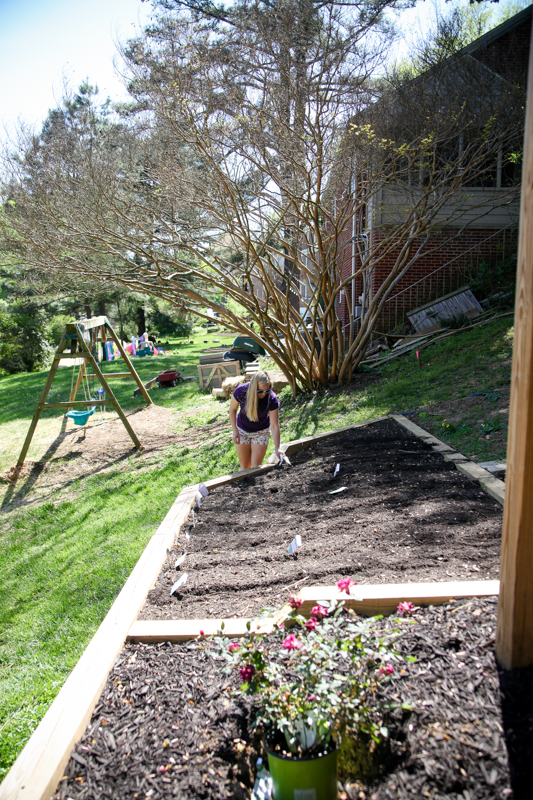
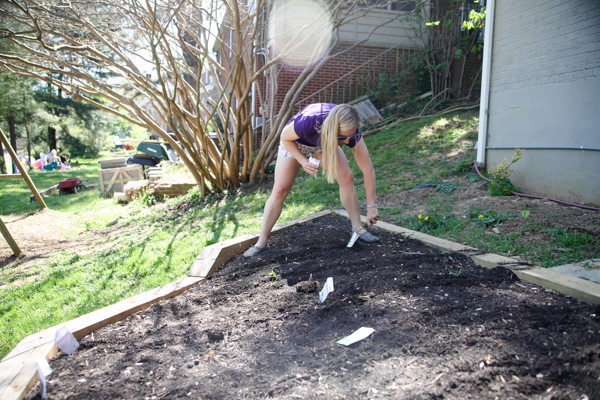

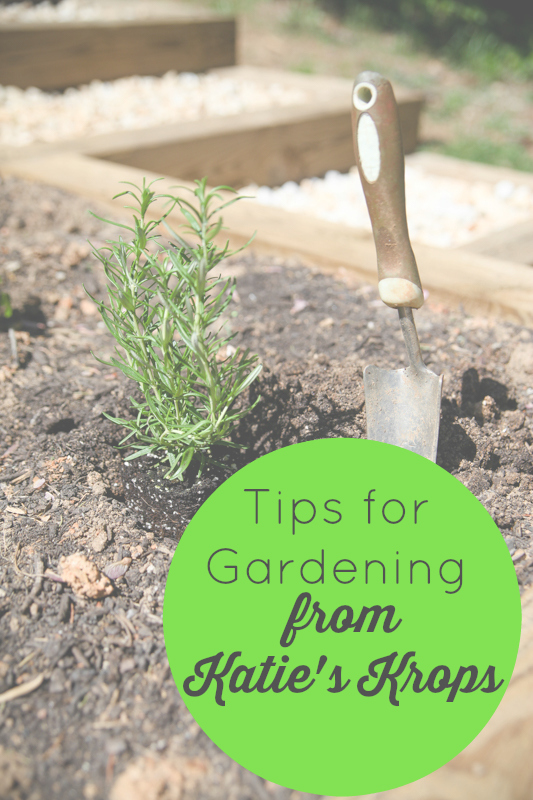
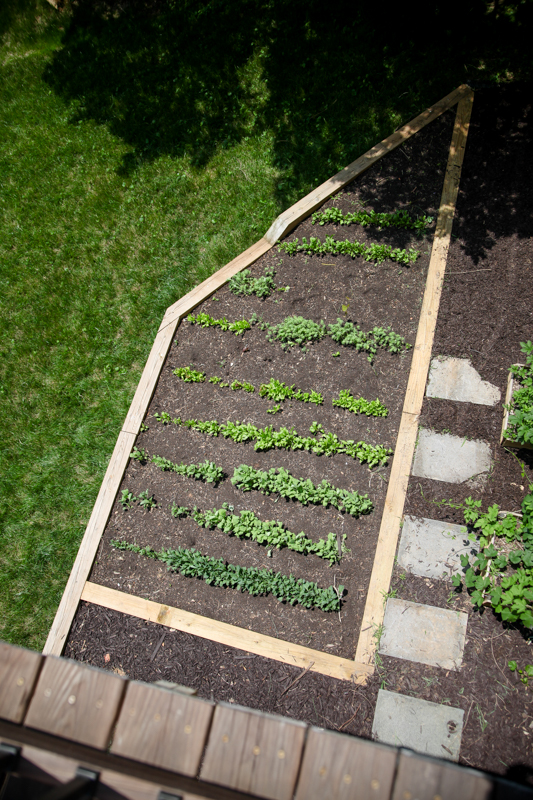
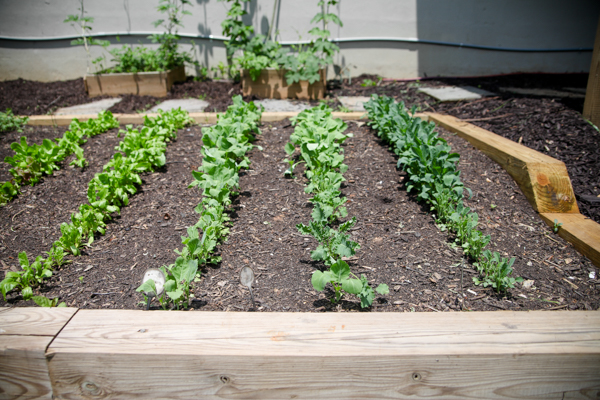
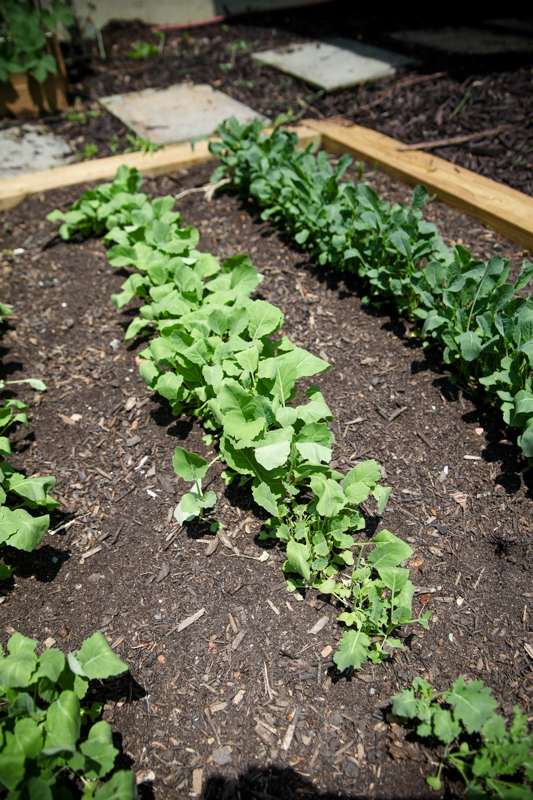
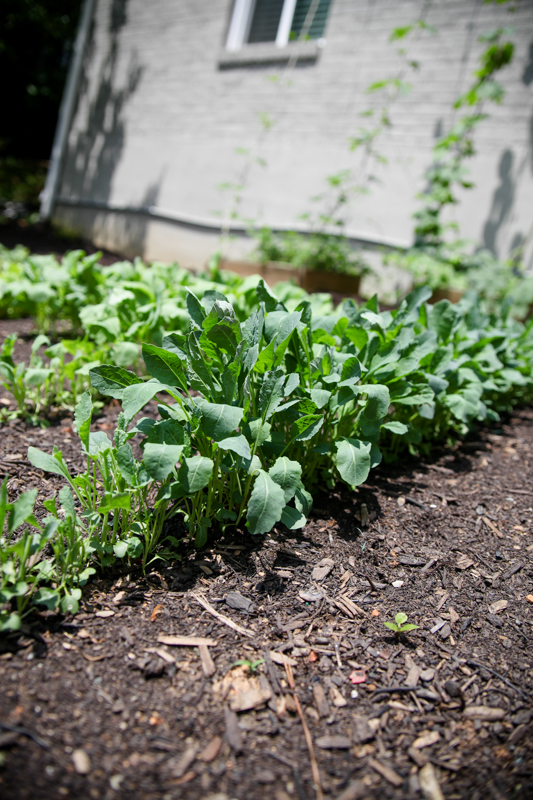
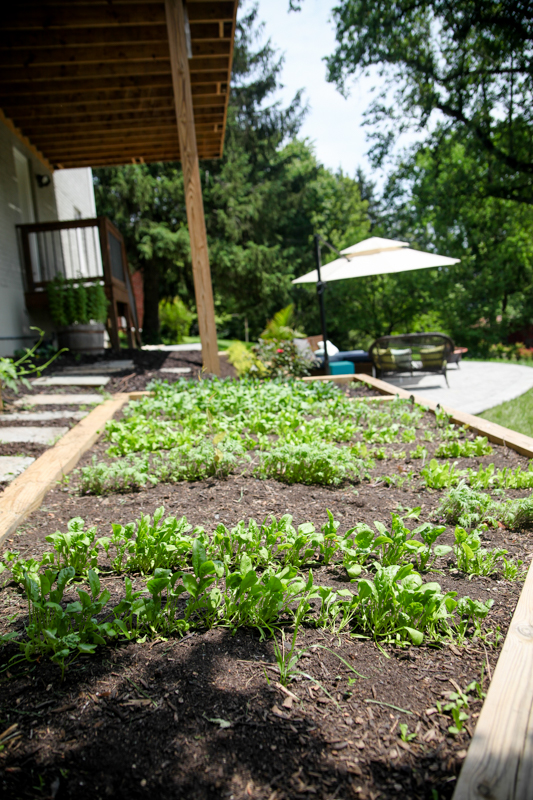
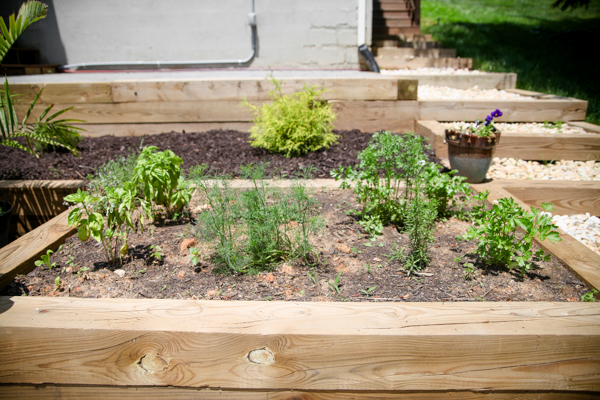
Andrea @ Chasing Strength says
This is my first year gardening completely solo as well. For that reason I chose to keep it on the smaller side as well, I have 2 tomato plants, one Pino Noir pepper, a few herbs…and of course my greens, spinach, chard, a variety of lettuce and beets (the tops are great to eat too) My main tip, would be to pinch the top of your basil to ensure a larger crop.
Sam says
Hi Kath! The garden looks great. Just curious how you’re keeping animals away from eating your greens — or do you not have that problem? I’ve got a pesky rabbit and some other digging critters that love to get in!
KathEats says
I haven’t had trouble with that in this house so far so I have no idea
Eileen says
The garden looks great, and Katie sounds amazing. How old is she now?
Katy Electrician says
Thanks for the tips! I always love hearing about your garden!
Kara says
If you have room, pick up a tomato plant from your local garden center. You won’t regret it. Just one plant will give you more than enough fruit for the whole summer. Nothing taste better than a salad with homegrown greens and a fresh tomato. Oh and don’t forget bruschetta, with all the fresh basil!
Jaymes says
For future reference, seed packets usually have instructions on them as far as how deep to plant the seeds and how far apart to plant them. (Not trying to talk down to you – you just said you “hoped putting them just below the surface” would work.) Of course, you could always just google “how deep to plant (kind of) seeds”!
KathEats says
I read them! That’s what I meant- I think I recall them saying 1/4″ deep. Still kind of nerve wracking 🙂 Thanks for the tip!
Jaymes says
Oh! I think I was thinking too literally based on what I thought you were saying. Sorry about that
KathEats says
No worries!
Dee M. says
I’ll bet Mazen could make some garden markers from popsicle sticks. I’m sure he’d love to be part of gardening!!
KathEats says
He does love helping out and helping me pick greens for meals (even if he’s not too excited about salads)
Amanda says
Your garden is so beautiful! I have tried a bit at gardening and have had mixed reviews–some plants worked, some didn’t. I’m sure it was something I did or didn’t do. I want to try my hand–or green thumb–at it again though! Thank you for sharing 🙂
Molly says
I highly recommend planting tomatoes! There is nothing like a sun-warmed tomato! I usually plant about 15 tomato plants (I preserve a lot of sauces and salsas). This year I went to a local college and purchased heirlooms for the first time. I hope they do well!
My best garden advice is to rotate where you plant your crops each year. The spot I had tomatoes last year has onions this year, for example. This keeps from stripping nutrients from the soil so much.
Amber says
This is my first year growing a garden as well! I was too nervous to start off with greens this year. Instead I have 4 pepper plants, zucchini, cucumbers, tomatoes, and strawberries. Thankfully my boyfriend’s mom is a Master Gardener so she’s given us plenty of great tips. Just this weekend we learned that watering the plants as if you’re giving the entire plant a shower is wrong, you’re supposed to only water down by the roots – whoops!
Tobias Armstrong says
I really appreciated your insights on soil. I’ve been wondering what the best mix of compost and soil is for my own yard, so I’m glad to hear that you prefer 50/50. My wife and I are starting to plan for a garden out back and now we just need to order topsoil. Thanks for the great advice!
Ruth says
Thanks a ton for sharing! I’ve just moved to a place where I can have my own garden-ish area. Beginner’s tips are much needed! Katie’s tips and her website will be very helpful. Let’s see what can happen outside 🙂